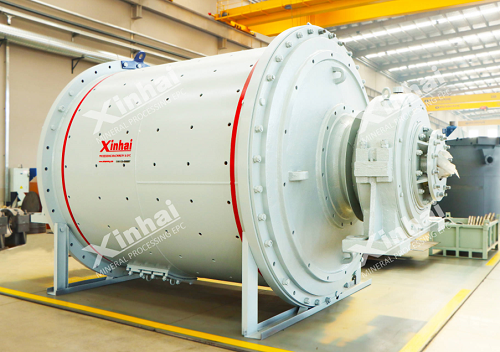Fatty acid or soap flotation of spodumene is a proven recovery method, but the surface conditions of the pulverized or ground particles often require a pre-flotation treatment. This involves high-intensity agitation with cleaning agents such as sodium silicofluoride, trisodium phosphate or sodium sulfide and sodium hydroxide, followed by desliming of the pulp.
When spodumene is to be floated, agitation with an anion collector followed by flotation usually produces a satisfactory concentration of spodumene. Oleic acid and soaps work well in neutral and weakly alkaline pulps, while naphthenic acid, sulfonated castor oil, etc. work best in acidic pulps.
The conditioned pulp is diluted to approximately 20% solids for flotation in flotation machines. Open flow machines have some advantages in terms of coarse grit handling characteristics, with the sand door placed very close to the bottom of the machine to improve the passage of the 20 mesh fraction. The conical impeller and shroud wear plates of molded rubber construction provide satisfactory service for this rough, abrasive job. However, molded rubber receding disc impellers and diffuser type wear plates also provide satisfactory results when operating at higher speeds than conical disc impellers.

The froth product from the initial rough flotation represents gangue contamination and is cleaned with more reagent in additional flotation cells to increase spodumene recovery. No attempt was made to remove iron minerals in the roughing circuit.
The combined rougher and concentrate tailings, the spodumene product containing iron mineral contamination, are then washed and concentrated in a rake classifier to adjust to a solids content of 70-75%. Reagents used to remove iron minerals include combinations such as hydrofluoric acid at pH 5, sodium resinate, and foaming agents.

The conditioned pulp is then diluted to 20-25% solids for flotation. Complete removal of iron minerals along with some remaining feldspar is done in a foam product which is small and discarded.
The final clean gangue foam contains feldspar and mica and can be processed in an acid circuit to recover the mica first. The feldspar is then separated from the quartz by ammonium hydrofluoride flotation.
The spodumene concentrate is discharged at the tailings discharge of the flotation machine, ready for final treatment. Spodumene slurries contain approximately 20% solids and must be dewatered prior to filtration to reduce the volume of the filtrate. Dewatering to 20% moisture is accomplished in the rake classifier with little or no loss of solids in the overflow water.
Graded sand is best filtered on top feed or horizontal filters. Due to the fast-settling, granular nature of spodumene, traditional drum and disc filters are not suitable. Filtration reduces the moisture content to less than 10% and the filter discharge is then dry.
Direct fired standard rotary dryers satisfactorily remove the balance of moisture. Vibrating screens remove any debris entering the flotation circuit, and the spodumene is then ready to be shipped to market or chemically treated to recover lithium salts
© 2021 Yantai KZ Mining Processing Technology & Equipment Inc.